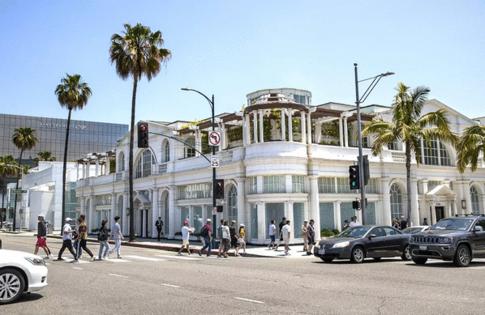Top 10% of earners drive a growing share of US consumer spending
Published in Business News
Wealthy consumers continue to account for a growing share of U.S. consumer spending, highlighting the lopsided strength of the economy as a slowdown in hiring and wariness among other income cohorts raise fears of a slowdown.
Consumers in the top 10% of the income distribution accounted for 49.2% of total spending in the second quarter, up from 48.5% in the first quarter, reaching the highest level in data going back to 1989, according to an analysis of Federal Reserve data by Mark Zandi, chief economist for Moody’s Analytics.
The figures help to explain how the economy has remained afloat and avoided recession amid a substantial decline in hiring, rising debt delinquencies and stubborn inflation that is straining many households. Preliminary revisions to payroll data released last week showed job growth in the year through March was roughly half as strong as previously reported.
Retail sales rose in August for a third month, according to separate data released Tuesday by the Commerce Department. The report beat economists’ expectations and showed consumers are still spending even as tariffs make some goods more expensive and sentiment remains subdued.
Some economists worry the trend of seeing a small cohort of Americans account for an ever-growing share of the spending that powers the economy could put the expansion on wobbly footing at a time when other risks are rising.
“The economy’s prospects are tethered to the fortunes and spending of the well-to-do,” Zandi said. “If they turn more cautious in their spending, for whatever reason, the economy will suffer a recession.”
One potential trigger, Zandi added, would be a downturn for stocks. Equity markets stand near record levels and property values remain elevated. That means many wealthier Americans have seen their net worth rise, encouraging them to keep their wallets open.
In contrast, the bottom 80% of the income distribution, or consumers making less than roughly $175,000 a year, have seen their spending merely keep pace with inflation since the pandemic, Zandi wrote in a social media post.
A weaker employment backdrop, meanwhile, is raising worries that the labor market is near a turning point and might deteriorate significantly. Fed officials are widely expected to respond by lowering interest rates by a quarter percentage point this week.
©2025 Bloomberg L.P. Visit bloomberg.com. Distributed by Tribune Content Agency, LLC.












Comments